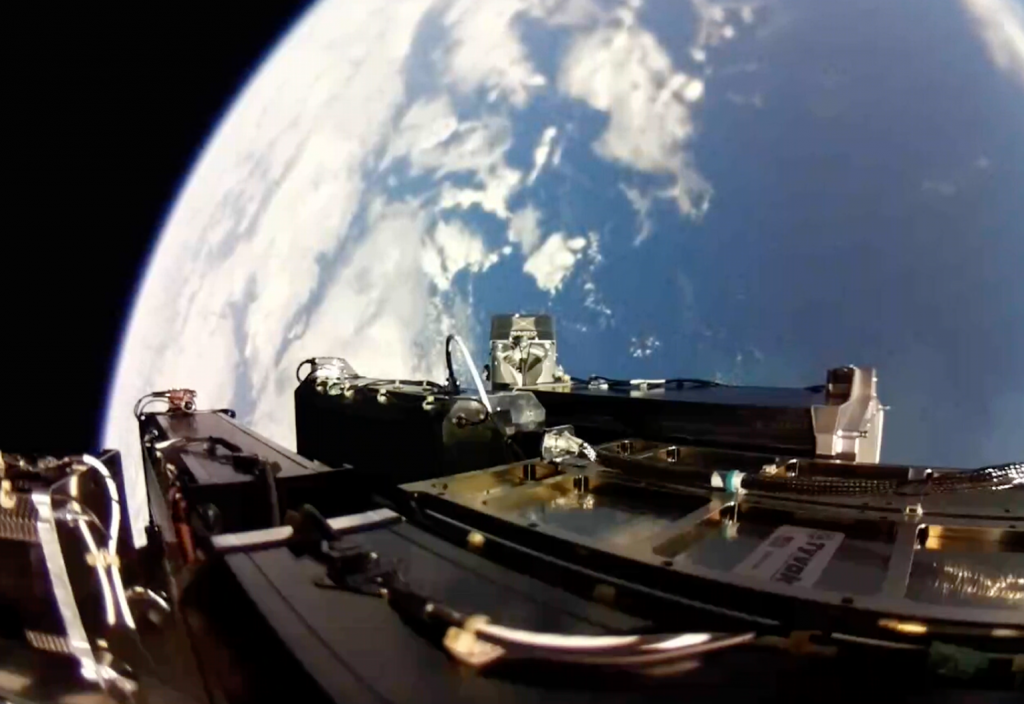With 1 million devices connected to their four-nanosatellite network, Fleet Space Technologies is gearing up to launch 10 more satellites by 2020 to meet the needs of its growing waiting list.
According to Fleet CEO and aerospace engineer Flavia Tata Nardini, the Adelaide-based company’s new initiative – dubbed Project Galaxy – has received an overwhelming response from Industrial Internet of Things (IIOT) users around the world.
Recently launched at The Things Network Conference in Amsterdam, Project Galaxy attracted more than 3 million subscribers in the first few days.
The service costs US$2 per device per year, and provides 500 kB of satellite data each month. This is more than enough for devices to send and receive information several times a day, with additional capacity to enable forecasting, prediction and maintenance.
“In the big scheme of things, 500 kB is not much, but for an IoT device it’s a good amount of data,” Tata Nardini told create.
Global excitement

Tata Nardini said the companies who have signed up to Project Galaxy include a mix of Fortune 500 giants and tech startups.
Interestingly, about half of the subscriptions came from the US, with the rest spanning the globe from Oceania, the Pacific, Africa and Europe.
Project Galaxy is serviced by Fleet’s network provided by the four CubeSats it launched last year. Although users will only have a satellite pass overhead about once every six hours, Tata Nardini said this will still meet customers’ needs as the vast majority only need to send data two or three times a day.
“With edge computing, there’s a lot that the sensor can do in the field without seeing the satellite,” she explained.
Tata Nardini explained there was a trade-off between the number of satellites in their constellation and the level of capacity and reliability. For customers that need to connect more frequently, or in emergencies, Fleet can provide another service via third-party satellite network providers including Iridium.
Moving fast
To decrease the latency of their network and cater to the high demand, Fleet plans to ramp up their launch schedule and have an additional 10 satellites in low-Earth orbit (LEO) by February 2020.
“We were not expecting such a [response] from the market … it went very fast,” Tata Nardini said, adding that their four existing satellites will be unable to cater to the number of subscribers on the waiting list.
Satellites have the potential to connect devices in remote areas that might not have access to terrestrial networks. Tata Nardini said Fleet currently leads the market in offering an IIoT backhaul that uses the LoRaWAN (long range wide area network) protocol for satellite communications.
“There’s a lot of companies out there providing sensor to satellite communications … but for LoRaWAN we are the frontrunners at the moment, so we have to go fast,” she explained, emphasising this won’t be at the expense of a reliable connection.
However, Tata Nardini said she was not too concerned about competition, as the rapid expansion of the IIoT means there will be more than enough devices to go around.
A major bottleneck slowing Fleet down is the availability of rockets to launch their nanosatellites into space. Tata Nardini is looking forward to working with Queensland’s Gilmour Space Technologies, which is on a mission to be the first to launch a commercial rocket from Australia.
The space industry in Australia is picking up speed, with homegrown startups like Fleet and Gilmour Space Technologies pushing the boundaries of what we think is possible. Tata Nardini predicts that we will see a lot of changes in the next three years.
“Australia is really positioning itself as a commercial space hub. So in the next three years I think we will be utterly surprised about what this country can do,” she said.
